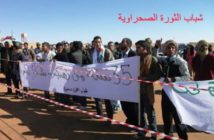[Imrane Binoual] Security analysts meeting in Doha discuss ways to tackle Sahel instability.
Terrorism 2013-05-15
Global impact to Sahel terror
By Imrane Binoual in Doha for Magharebia – 15/05/2013
A recent international security summit took a close look at the internal dynamics of African terrorist groups.
Experts and military officers from 42 countries just wrapped up a two-day conference in Doha aimed at examining the impact of insecurity in the Sahel and Horn of Africa on the Gulf.
The Moroccan Centre for Strategic Studies (CMES) organised the May 12th-13th “Doha Security Symposium” in partnership with the Centre for Strategic Studies, an offshoot of the Qatari armed forces. Delegates from Africa, Asia, Europe and the Americas looked at the ramifications of the activities of terrorist groups in the Sahel, some of whom may have links with al-Qaeda, particularly in Yemen.
Those organising the meeting said that the risks and threats associated with geopolitical change in the Sahel have repercussions for security in the Gulf, and this was a reflection of the “arc of crisis” extending from the Atlantic to the Indian Ocean.
Security within the Arabian Peninsula has to be viewed within that context, experts said. A number of conflict-ridden countries were mentioned in the discussions, including Mali and its impact on Algeria, Mauritania and Niger.
Experts and military figures stressed that the radical networks across Sub-Saharan Africa are a major, clear and immediate threat to security. In order to design, develop and implement strategies likely to counter that threat, there is a need to understand their origins, trace their development and identify their dynamics, they said.
The activities of al-Shabaab in Somalia, Boko Haram in northern Nigeria and al-Qaeda in the Islamic Maghreb (AQIM) and Ansar al-Din in northern Mali show that they constitute the centre of gravity of non-state armed violence.
“The lack of information, the constant changes and the unpredictability of these organisations makes any general analysis of them a complicated affair,” said Ibrahim Sani Abani, secretary-general of the Community of Sahel-Saharan States (CEN-SAD).
Delegates did, however, manage to identify three characteristics which can be used to understand the nature of these groups and to counteract them.
The first characteristic is that “the majority of violent organisations in the Sahel-Sahara have their roots in conflict pitting them against their country of origin. Their signing up to a transnational terrorist network is just a further stage in the movement’s development,” stressed Sani Abani.
The second key characteristic exhibited by these armed groups has to do with the fluidity of their leadership and organisational structures. The genealogy of terrorist organisations shows that they tend to proliferate more by means of dissidence than by extension. Interpersonal relationships are the real cement holding these groups together.
In the case of a conflict between individuals, the flexibility of the organisational structure suggests it is easy for a member who is in disagreement to withdraw and set up their own movement. That is why, explains the CEN-SAD secretary-general, “when it comes to resolving conflicts, the multiplicity of movements, the fluidity of their structures and the weak mandate held by their leaders place a huge limitation on the capacity of negotiators to reach inclusive, effective peace agreements.”
The final characteristic of the armed movements active in the region put forward by conference delegates came from the way they combine the pursuit of their political agenda with criminal activities.
Discussing this aspect, Modibo Goita, an advisor to the military chiefs of staff in Mali, named a number of examples: “In Somalia, al-Shabaab derives a large part of its income from widespread extortion and commission on seizures affected by pirates. In Mauritania and Mali, the katiba led by Mokhtar Belmokhtar has largely financed its activities through cigarette, cocaine and weapons smuggling.”
“However, it seems that hostage-taking is the most lucrative activity, which explains why this practice has become widespread among al-Shabaab, AQIM, MUJAO and Boko Haram,” Goita explained.






